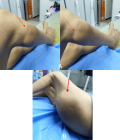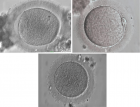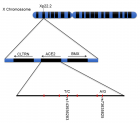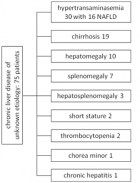Abstract
Research Article
Quality Evaluation of Sorghum bicolor Stem Sheath Enriched with Spondias mombin Extract
Adedeji TO*
Published: 03 June, 2020 | Volume 4 - Issue 1 | Pages: 012-019
The nutritional compositions of sorghum stem sheath-Spondias mombin extract were evaluated. The enriched stem sheath extract were obtained by mixing sorghum stem sheath and Spondias mombin (iyeye) extract in varied proportions at 100:0; 0:100; 95:5; 90:10 and 85:15. The five samples were subjected to analysis: proximate, mineral, vitamin C, antinutrient composition. Data obtained were analysed using descriptive and inferential statistics. The result showed that observable increases were noticed in proximate, vitamin C and mineral composition from 5% inclusion of Spondias mombin extract in sorghum stem sheath drinks. The anti-nutrient compositions: tannin, oxalate and saponin, ranged from (0.144 to 0.442, 0.303 to 0.385, 0.070 to 0.198) mg/100 ml, respectively for sorghum stem sheath- Spondias mombin extract which were within consumable safe limits. The study concluded that nutritious enriched drinks could be produced from sorghum stem sheath and Spondias mombin extract at ambient temperature.
Read Full Article HTML DOI: 10.29328/journal.afns.1001022 Cite this Article Read Full Article PDF
Keywords:
Proximate; Extract; Spondias mombin; Sorghum stem sheath
References
- FAO. Sorghum and Millets in Human nutrition. FAO (Food and Nutrition Series) 27. 1995.
- Adetuyi AO, Pambang V, Oyetayo VO, Adetuyi FO. The Nutritive Value and Antimicrobial Property of Sorghum bicolor L. Stem (Poporo Flour Used as Food Colour Additive and its Infusion Drink. Am J Food Technol. 2007; 2: 79-86.
- Adepoju OT, Oyewole EO. Nutrient composition and acceptability of fortified jam from Spondias mombin (Hog plum, (Iyeye)) fruit pulp. Nigeria J Nutri Sci. 2008; 29: 180-189.
- Adepoju OT, Karim SA. Nutrient composition, anti-nutritional factors and jam preparation from Spondias mombin (hog plum (Iyeye)) fruit pulp. Nigeria J Nutri Sci. 2004; 25: 20-25.
- Oladejo TA. Proximate Composition and Micronutrient Potentials of Three Locally Available Wild Fruits In Nigeria. African J Agric Res. 2009; 4: 887-892.
- Akubor PI, Egbekun MK. Adepoju OT, Onasanya LO, Ogunfuwa AO, et al. Nutrient composition and acceptability test of juice and ice cream from Spondias mombin (Hog plum) fruit pulp extract. J Trop Med Resolut. 2006; 2007; 22: 25–32.
- Oyewole EO, Adepoju OT. Nutrient composition and acceptability of honey-substituted jam from spondias mombin (Hog plum) fruit pulp. Nigeria J Nutr Sci. 2005; 26: 38-44.
- Maldonado-Astudillo YI, Alia-Tejacal I, Nunez-Collin CA, Jimenez-Hernandez J, Pelayo-Zaldivar C, et al. Postharvest physiology and technology of Spondias purpurea L. and S. mombin L. Scienta Horticulturae. 2014; 174: 193-206.
- Ayoka AO, Akomolafe RO, Akinsomisoye OS, Ukponmwan OE. Medicinal and Economic Value of Spondias mombin Extract. African J Biomedical Res. 2008; 11: 129–136.
- Mattietto RA, Matta V. Cajá ( Spondias mombin L.). In Yahia, E. (Ed). Postharvest Biology and Technology of Tropical and Subtropical Fruits. 2011; 2: 330–353.
- Akther S, Shahriar SMS, Morshed FAS, Islam MN. Study on chemical composition of fresh Mymensingh and Barishal Hog-plum (Spondius mangifera) and developed leather and jelly and sensory evaluation weight of residue. Int J Environ Sci Nat Resour. 2012; 5:29–36.
- Olayemi O, Salihu B, Allagh S. Evaluation of the binding properties of Spondias purpurea Gum in metronidazole tablet formulations. Int J Pharma Pharmaceut Sci. 2013; 5(Suppl 2): 584–589.
- Arif M, Fareed S. Pharmacognostic investigation and authentication of potentially utilized fruit Spondias mangifera (wild). Int J Pharma Clin Res. 2010; 2: 31–35.
- Tiburski JH, Rosenthal A, Deliza R, De Oliveira Godoy RL, Pacheco S. Nutritional properties of yellow mombin (Spondias mombin L.) pulp. Food Res Int. 2011; 44: 2326-2331.
- Olayiwola IO, Akinfewa V, Oguntona C, Sanni S, Onabanjo O, Afolabi WA. Phytonutrient, antioxidant and mineral composition of some wild fruits Extract in south west Nigeria. Nigerian Food J. 2013; 31: 33–40.
- Ayoka AO, Akomolafe RO, Iwalewa EO, Akanmu MA, Ukponmwan OE. Sedative, antiepileptic and antipsychotic effects of Spondias mombin L. (Anacardiaceae) in mice and rats. J Ethnopharmacol. 2006; 103: 166–175. PubMed: https://pubmed.ncbi.nlm.nih.gov/16188408/
- Njoku PC, Akumefula MI. Phytochemical and nutrient evaluation of Spondias mombin leaves Extract. Pakistan J Nutrition. 2007; 6: 613-615.
- Igwe CU, Onyeze GOC, Onwuliri VA, Osuagwu CG, Ojiako AO. Evaluation of the chemical composition of the leaf Extract of Spondias mombin Linn from Nigeria. Aus J Basic Sci. 2010; 4: 706 – 710.
- Ayoka AO, Akomolafe RO, Iwalewa EO, Ukponmwan OE. Studies on the anxiolytic effects of Spondias mombin L. (Anacardicaea) extracts. African J Traditional, Complemen Altern Med. 2005; 2: 153 – 165.
- Fred-Jaiyesimi AA, Wilkins MR, Abo KA. Hypoglycaemic and amylase inhibitory activities of leaves of Spondias mombin Linn Extract. African J Med Medical Sci. 2009; 38: 343-349. PubMed: https://pubmed.ncbi.nlm.nih.gov/20499628
- Akinmoladun AC, Obuotor EM, Farombi EO. Evaluation of antioxidant and free radical scavenging capacities of some Nigerian indigenous medicinal plants. J Med Food. 2010; 13: 444-451. PubMed: https://www.ncbi.nlm.nih.gov/pubmed/20192848
- Aromolaran O, Badejo OK. Efficacy of fresh leaf extracts of Spondias mombin against some clinical bacterial isolates from typhoid patients. Asian Pac J Trop Dis. 2014; 4: 442 – 446.
- Bolade MK, Oluwalana IB, Ojo OL. Commercial Practice of Roselle (Hibiscus sabdariffa) Beverage Production: Optimization of Hot Water Extraction and Sweetness Level. World J Agric Sci. 2009; 5: 126-131.
- Sowonola OA, Akintunde TY, Adedeji F. Influence of Malting on the Nutritional Characteristics of Kunnu –zaki. African J Biotechnol. 2005; 5: 1-12.
- Francini A, Sebastiani L. Phenolic Compounds in Apple (Malus x domestica Borkh.): Compounds Characterization and Stability during Postharvest and after Processing. A Review on Antioxidants. 2013; 2: 181-193. PubMed: https://www.ncbi.nlm.nih.gov/pmc/articles/PMC4665438/
- Official Methods of Analysis, (26th edn). Association of Analytical Chemist, Washington D.C, USA. 2010.
- Fashakin JB, Ilori MO, Olarewaju IB. Cost and Quality Optimization of a Complementary Diet from Plant Protein and Corn Flour using a Computer Aided Linear Programming Model. Nigerian Food J. 1991; 9: 123-127.
- Hassan AS, Hassan HS. Quantitative estimation of vitamin C in some local fruits. Science World J. 2008; 3: 113–115.
- Edet A, Eseyin O, Aniebiet E. Antinutrients composition and mineral analysis of Allium cepa (onion) bulbs Extract. African J Pharm Pharmacol. 2005; 9: 456–459.
- Price ML, van Scoyoc S, Butler LG. A critical evaluation of vanillin reaction as an assay for tannin in sorghum grain. J Agric Food Chem. 1978; 26: 1214-1218.
- Brunner JH. Direct spectrophotometric determination of saponin. Annual Chem. 1984; 34: 1314-1326.
- Ogbe AO, Affiku JP. Proximate Study, Mineral and Anti-Nutrient Composition of Moringa oleiferaLeaves Extract Harvested from Lafia, Nigeria: Potential Benefits in Poultry Nutrition and Health. J Microbiol, Biotechnol Food Sci. 2012; 1: 296-308.
- Bola OA, Aboaba OO. Microbiological and Physico-chemical Evaluation of some Non- alcoholic Beverages. Pakistan J Nutri. 2004; 3: 188-192.
- Egbere OJ, Anuonye JC, Chollom PF, Okpara PV. Effects of Some Preservation Techniques on the Quality and Storage Stability of Zobo Drink (A Nigerian, non-alcoholic beverage from Hibiscus sabdariffa). J Food Technol. 2007; 5: 225–228.
- Moyo BB, Masika PJ, Hugo AA, Muchenje VV. Nutritional Characterization of Moringa (Moringa Oleifera Lam.) Leaves Extract. African J Biotechnol. 2011; 10: 12925-12933.
- Okaka JC. Development and Quality Evaluation of cowpea-wheat biscuits. Nigerian Food J. 2005; 8: 56-62.
- Onyeka EU. Food and nutrition. 2nd Edition, Charismatic Forum Publisher, Owerri, Nigeria. 2008; 151.
- Jimoh FO, Oladiji AT. Preliminary studies on Piliostigma thonningii seeds Extract: Proximate analysis, mineral composition and phytochemical screening. African J Biotechnol. 2005; 4: 1439-1442.
- Chinma CE, Igyor DI. Physicochemical and Sensory Properties of Cookies Produced from Cassava/Soyabean/Mango Composite Flours. J Food Technol. 2007; 5: 256-260.
- Ihekoronye AI, Ngoddy PO. Inhibition of three Fungal Isolates from Sorrel Drink (Zobo) using Hurdle Techniques. World J Agric Sci. 1985; 3: 339 – 343.
- Adepoju OT. Proximate composition and micronutrient potentials of three locally available wild fruits in Nigeria. African J Agric Res. 2009; 4: 887-892.
- Nkamafiya II, Osemeahon SA, Dahiru D, Umaru HA. Studies on the chemical composition and physicochemical properties of the seeds Extract of baobab (Adasonia digitata). African J Biotechnol. 2007; 6: 756-759.
- Bamigboye AY, Okafor AC, Adepuju OT. Proximate and mineral composition of whole and dehulled sesame Extract. African J Food Sci Technol. 2010; 1: 71-75.
- Onimawo IA. Proximate composition and selected physiochemical properties of the seed, pulp and oil of sour sop (Annona muricata). Plant Foods for Human Nutr. 2002; 57: 165-171.
- Lohlum SA, Maikidi GH, Solomon M. Proximate composition, amino acid profile and phytochemical screening of Lophira lanceolata seeds Extract. African J Food Agric Nutrition Develop. 2010; 10: 2012-2023.
- Bello MO, Falade OS, Adewusi SRA, Olawore NO. Studies on the chemical compositions and antinutrients of some lesser known Nigerian fruits. African J Biotechnol. 2008; 7: 3972-3979. S184.
- Oladele IO. Application of Quality Protein Maize in the Formulation of Broiler’s Finisher Feed. J Sci Food Hospitality. 2007; 1: 47-50.
- Adedayo OA, Ganiyu O. Oluwaseun J, Agbebi A, Boligon A, et al. Sorghum [Sorghum bicolor (L.) Moench] Leaf Sheath Dye Protects Against Cisplatin-Induced Hepatotoxicity and Oxidative Stress in Rats. J Med Food. 2014; 17: 1332–1338. PubMed: https://www.ncbi.nlm.nih.gov/pmc/articles/PMC4259168/
- Awika JM, Rooney LW, Waniska RD. Properties of 3-deoxyanthocyanins from `sorghum Extract. J Agric Food Chem. 2004; 52: 4388–4394. PubMed: https://pubmed.ncbi.nlm.nih.gov/15237941
- Oluwalana IB, Ade-Omowaye BIO, Adedeji TO. Nutritional Composition of a Non- Alcoholic Beverage Spiced with Zingiber officinale Extract Produced from Sorghum bicolor Stem sheath. Int J Food Sci Nutr Enginee. 2013; 3: 21-27.
- Fuglie LJ. The Miracle Tree: Moringa oleifera Natural Nutrition for the Tropics. Training Manual. Church World Service, Dakar, Senegal. 2001; 34-46.
- Bamishaiye EI, Olayemi FF, Bamishaiye OM. Effect of Boiling Time on Minerals and Vitamin C Content of three Varieties of Hibiscus Sabdariffa Drink in Nigeria. World J Agric Sci. 2011; 7: 62–67.
- Omoba ML. Obalance AB, Martins DF, Madzvanuse M, Many ES. Manual of Laboratory Procedures for Quality Evaluation of Sorghum and Millet, International Crop Research Institute of the Semi Arid and Tropics (ICRSAT), India. 2013; 64.
- Drugs Facts and Comparisons. Edition Editor: Bernie R. Olin, Published by Facts and Comparisons Division, J.B. Lippincott Company 111 West Port Plaze, Suite 432, USA. 1991.
- Otten JJ, Hellwig JP, Meyers LD. Dietary reference intakes: The essential guide to nutrient requirement. Washignton: The National Academies Press. 2006.
- United States Department of Agriculture. Composition of Foods: Raw, Processed and Prepared Agriculture Research Services, USDA Nutrient Database Laboratory. USDA National Nutrient Database for Standard Reference. 2009.
- Gbadegesin AR, Gbadamosi SO, Odunlade TV. Physicochemical and Sensory Properties of Pineapple Flavoured Powders. J Cogent Food Agric. 2017; 129-133.
- Rai B, Anand SC. Serum and Salivary Vitamin C in Periodontal Disease: Adv Med Dent Sci. 2008; 2: 26.
- Health and Safety Publications. Permissible Levels of Antinutrients: Series on the Safety of Novel Foods, Feeds and Environment. 2011; 129-133.
- Osuntogun B, Aboaba O. Microbiological and Physico-chemical Evaluation of some Non-alcoholic Beverages. Pakistan J Nutr. 2004; 3: 188-192.
- Gbadamosi SO, Famuwagun AA. Chemical, Functional and Antinutritional Properties of Fermented Kariya (Hilder gardiabarteri) Seed Protein Isolates. International Conference of Faculty of Technology, Obafemi Awolowo University, Ile- Ife. 2015; 5: 101-110.
- Tsai J, Huang JK, Wu TT, Lee YH. Comparison of Oxalate Content in Foods and Beverages in Taiwan. J Technol Agric. 2005; 16: 93-98.
- Low Oxalate Diet: Patient Education Materials. Affiliated with the University of Pittsburgh Schools of the Health Sciences, Supplemental Content provided by Health- wise Incorporated. 2007.
- Mubarak AE. Nutritional Composition and Antinutritional Factors of Mung Beans as Affected by Some Home Traditional Processes. J Food Chem. 2005; 89: 489-495.
- Fasoyiro SB, Ajibade SR, Omole AJ, Adeniyan ON, Farinde EO. Proximate, Minerals and Antinutritional Factors of Some Underutilized Grain Legumes in the South West Nigeria. J Nutrition Food Sci. 2006; 36: 18-23.
- Albihn PBE, Savage GP. The Effect of Cooking on the Location and Concentration of Oxalate in Three Cultivars of New Zealand Grown Oca “(Oxalis tuberosa Mol). Journal of Science of Food and Agriculture. 2001; 81: 1027-1033.
- Adelakun OE, Oyelade OJ, Ade-Omowaye BIO, Adeyemi I A, Van De Venter M. Chemical composition and the antioxidative properties of Nigerian okra seed (Abelmoschus esculentus Moench) Extract. Food Chem Toxicol. 2009; 47: 1123-1126. PubMed: https://pubmed.ncbi.nlm.nih.gov/19425185
Figures:
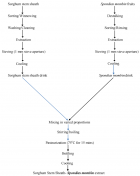
Figure 1
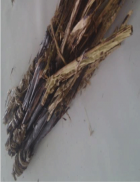
Figure 2
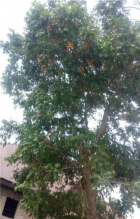
Figure 3
Similar Articles
-
Effect of storage period on the quality characteristics of two varieties of African Mango Seed Flour at ambient temperatureAdedeji TO*. Effect of storage period on the quality characteristics of two varieties of African Mango Seed Flour at ambient temperature. . 2017 doi: 10.29328/journal.afns.1001002; 1: 012-019
-
Effect of drying methods on the physicochemical properties and Fatty Acid composition of Moringa Seeds OilIbrahim TA*,Oloye DA,Omosuli SV. Effect of drying methods on the physicochemical properties and Fatty Acid composition of Moringa Seeds Oil . . 2017 doi: 10.29328/journal.afns.1001005; 1: 027-032
-
Effect of Pre-Treatments and Drying Methods on the Chemical Quality and Microbial Density of Wild Edible Oyster MushroomIbrahim TA*,Adaramola-Ajibola KM,Adesuyi AT,Olanrewaju SO,Akinro EB. Effect of Pre-Treatments and Drying Methods on the Chemical Quality and Microbial Density of Wild Edible Oyster Mushroom. . 2017 doi: 10.29328/journal.afns.1001007; 1: 039-044
-
Development and quality evaluation of Jam from Watermelon (Citrullus Lanatus) and Pawpaw (Carica Papaya) juiceAdedeji Temileye Omotayo*. Development and quality evaluation of Jam from Watermelon (Citrullus Lanatus) and Pawpaw (Carica Papaya) juice. . 2017 doi: 10.29328/journal.afns.1001010; 1: 063-071
-
Evaluation of Clupeids and Danish fish meal based diets on the growth of African catfish, Clarias gariepinus fingerlingsLenient MO Ibiyo*,Rowland MO Kayode,A Oresegun, Oluwaseyi Mogaji,Felicia O Joshua. Evaluation of Clupeids and Danish fish meal based diets on the growth of African catfish, Clarias gariepinus fingerlings. . 2018 doi: 10.29328/journal.afns.1001014; 2: 031-037
-
Lemongrass tea consumption and changes in Acid-Base Balance and Electrolyte homeostasisChristopher E Ekpenyong*. Lemongrass tea consumption and changes in Acid-Base Balance and Electrolyte homeostasis. . 2018 doi: 10.29328/journal.afns.1001016; 2: 041-051
-
Nutritional analysis of Sphenostylis Stenocarpa seeds partially included with soya bean meal in Heterobranchus Bidorsalis fingerling dietOluwaseyi Yanmife Mogaji*,Lenient Mercy Onivie Ibiyo,Felicia Oluwatoyin Joshua . Nutritional analysis of Sphenostylis Stenocarpa seeds partially included with soya bean meal in Heterobranchus Bidorsalis fingerling diet. . 2019 doi: 10.29328/journal.afns.1001019; 3: 017-020
-
Quality Evaluation of Sorghum bicolor Stem Sheath Enriched with Spondias mombin ExtractAdedeji TO*. Quality Evaluation of Sorghum bicolor Stem Sheath Enriched with Spondias mombin Extract. . 2020 doi: 10.29328/journal.afns.1001022; 4: 012-019
-
Eating habits and lifestyle changes during the COVID-19 lockdown: A comparative study (before and during isolation) on the 9 de Julio city (Buenos Aires, Argentina) populationMiriam Sosa*,Paula Cardinal,Eliana Elizagoyen,Graciela Rodríguez,Soledad Arce,M Fernanda Gugole Ottaviano,Victoria Pieroni,Lorena Garitta. Eating habits and lifestyle changes during the COVID-19 lockdown: A comparative study (before and during isolation) on the 9 de Julio city (Buenos Aires, Argentina) population. . 2020 doi: 10.29328/journal.afns.1001023; 4: 020-024
-
The “manna” extracted from the ash trees still cultivated in Sicily from mythical food to pharmaceutical and nutraceutical resourceVivienne Spadaro*,Francesco Maria Raimondo. The “manna” extracted from the ash trees still cultivated in Sicily from mythical food to pharmaceutical and nutraceutical resource. . 2022 doi: 10.29328/journal.afns.1001036; 6: 038-048
Recently Viewed
-
Application of Bioactive Cotton Packages for Packaging and Storage of Grains Using Aromatic ComponentsRefaie R,Zaghloul S,Elbisi MK,Hamdy A Shaaban*. Application of Bioactive Cotton Packages for Packaging and Storage of Grains Using Aromatic Components. Arch Food Nutr Sci. 2025: doi: 10.29328/journal.afns.1001064; 9: 011-019
-
Assessment of Albino Beech Supremacy to Pigmented Beech Proves to Be A Better Environmental Condition BioindicatorRenata Gagić-Serdar*,Miroslava Marković,Ljubinko Rakonjac,Goran Češljar,Bojan Konatar. Assessment of Albino Beech Supremacy to Pigmented Beech Proves to Be A Better Environmental Condition Bioindicator. Insights Biol Med. 2025: doi: 10.29328/journal.ibm.1001031; 9: 009-015.
-
Green Synthesis of Citrus sinensis Peel (Orange Peel) Extract Silver Nanoparticle and its Various Pharmacological ActivitiesJ Bagyalakshmi,M Prathiksha. Green Synthesis of Citrus sinensis Peel (Orange Peel) Extract Silver Nanoparticle and its Various Pharmacological Activities. Arch Pharm Pharma Sci. 2025: doi: 10.29328/journal.apps.1001065; 9: 009-013
-
The Accuracy of pHH3 in Meningioma Grading: A Single Institution StudyMansouri Nada1, Yaiche Rahma*, Takout Khouloud, Gargouri Faten, Tlili Karima, Rachdi Mohamed Amine, Ammar Hichem, Yedeas Dahmani, Radhouane Khaled, Chkili Ridha, Msakni Issam, Laabidi Besma. The Accuracy of pHH3 in Meningioma Grading: A Single Institution Study. Arch Pathol Clin Res. 2024: doi: 10.29328/journal.apcr.1001041; 8: 006-011
-
Autoantibodies in Autoimmune Addison’s Disease: Why are they Important?Maria Rosaria De Cagna, Norma Notaristefano, Maurizio Schiavone, Gianluca Palatella, Federica Ranù, Carmela Presicci, Valerio Cecinati, Marilina Tampoia*. Autoantibodies in Autoimmune Addison’s Disease: Why are they Important?. Arch Pathol Clin Res. 2024: doi: 10.29328/journal.apcr.1001042; 8: 012-015
Most Viewed
-
Feasibility study of magnetic sensing for detecting single-neuron action potentialsDenis Tonini,Kai Wu,Renata Saha,Jian-Ping Wang*. Feasibility study of magnetic sensing for detecting single-neuron action potentials. Ann Biomed Sci Eng. 2022 doi: 10.29328/journal.abse.1001018; 6: 019-029
-
Evaluation of In vitro and Ex vivo Models for Studying the Effectiveness of Vaginal Drug Systems in Controlling Microbe Infections: A Systematic ReviewMohammad Hossein Karami*, Majid Abdouss*, Mandana Karami. Evaluation of In vitro and Ex vivo Models for Studying the Effectiveness of Vaginal Drug Systems in Controlling Microbe Infections: A Systematic Review. Clin J Obstet Gynecol. 2023 doi: 10.29328/journal.cjog.1001151; 6: 201-215
-
Prospective Coronavirus Liver Effects: Available KnowledgeAvishek Mandal*. Prospective Coronavirus Liver Effects: Available Knowledge. Ann Clin Gastroenterol Hepatol. 2023 doi: 10.29328/journal.acgh.1001039; 7: 001-010
-
Causal Link between Human Blood Metabolites and Asthma: An Investigation Using Mendelian RandomizationYong-Qing Zhu, Xiao-Yan Meng, Jing-Hua Yang*. Causal Link between Human Blood Metabolites and Asthma: An Investigation Using Mendelian Randomization. Arch Asthma Allergy Immunol. 2023 doi: 10.29328/journal.aaai.1001032; 7: 012-022
-
An algorithm to safely manage oral food challenge in an office-based setting for children with multiple food allergiesNathalie Cottel,Aïcha Dieme,Véronique Orcel,Yannick Chantran,Mélisande Bourgoin-Heck,Jocelyne Just. An algorithm to safely manage oral food challenge in an office-based setting for children with multiple food allergies. Arch Asthma Allergy Immunol. 2021 doi: 10.29328/journal.aaai.1001027; 5: 030-037

HSPI: We're glad you're here. Please click "create a new Query" if you are a new visitor to our website and need further information from us.
If you are already a member of our network and need to keep track of any developments regarding a question you have already submitted, click "take me to my Query."






